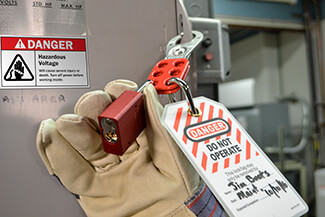NIOSH Digs Into Electrical Safety in Mining
03
February,
2023
2 MINUTE READ

Technological changes in the mining industry are nothing new. However, studying the best technology to employ for various practices takes time to ensure worker safety and significantly boost industrial efficiencies. To protect workers against traumatic injuries from arc flash and other electrical hazards that come with modern equipment changes, the National Institute of Occupational Health (NIOSH) says it has been investigating safety with existing and emerging technologies in mining for years. Automation technology can help improve worker safety by removing hazards. However, accidental hazards may also be introduced, the agency said.
Electrical Hazards in Mining
There has not been much change or modification to mining regulation in the past several years. The Mining Act was updated in 2006 and does not include details on electrical safety protocol. It is recommended by the Mine Safety and Health Administration (MSHA) that mining operations follow the National Fire Protection Agency's 70E. However, technology is changing rapidly. NIOSH says it continues to update its strategic plan through its mining program research. NIOSH's Intelligent Safety Technology for Mining Machinery project demonstrates the functionality of novel techniques and sensors to wirelessly and continuously monitor the status of machine guards, the presence of lockout/tagout locks, and the presence of personnel near hazardous locations. The agency says the plan aims to help in "solving the highest priority mine worker health and safety challenges."
"The concepts demonstrated in this project have not been developed into commercially available safety products and have not been widely adopted by the mining industry; however, we feel that the results show the promise and technical feasibility of this technology for enhancing safety during maintenance," said Jacob Carr of the NIOSH Pittsburgh Mining Research Division.
Mining operations can benefit from following electrical best practice guidance relevant to the mining industry. This can help bridge gaps in safety while also meeting global demand for commodity. By following best practices, mining operations can avoid time-consuming upgrades in the future. Here are some tips to get started:
- Conduct a safety audit or job hazard analysis.
- Ensure industry-approved arc flash labels are correct and in place.
- Ensure mining operations are up to code, prioritizing employee safety and optimizing mining operation efficiency.
- Train employees on electrical safety and include lockout/tagout procedures.
- Utilize properly rated personal protective equipment to protect against electrical hazards.
NIOSH estimates there are 5 to 10 arc flash explosions every day in the United States. In the mining industry, many electrical injuries are caused by non-contact electrical arcs. Mining electricians often make common repairs and maintain electrical equipment such as circuit breakers, instrument boards, vacuum contactors, and more. Energized electrical equipment, in any industry, carry the dangers of arc flash.
Increase Electrical Safety
An electrical accident in 2010 killed one contract electrician and seriously injured two others at a U.S. mine site. The team was installing ground fault indicator lights in a circuit breaker enclosure and had locked out the wrong disconnect switch. It is simple mistakes such as this that prompt NIOSH to research ways to address the prevention of mining electrical injuries. The NIOSH mining research program authors several studies on topics including power system design, engineering controls, procedures, and proper protective equipment (including arc flash signs and labels).
General mining housekeeping includes paying attention to obvious electrical hazards. Open electrical boxes and tools not being properly maintained are hazards that are commonly overlooked, according to MSHA. Mining safety managers can take safety further by ensuring hazard communication is in place and up to date, such as the labeling of service equipment and automatic transfer and disconnect switches. Make sure clear and accurate messages detail important information such as arc flash hazard warnings and other general warning labels and signs.
RELATED RESOURCES

Crucial Steps to Reduce Lockout Tagout Violations
Though simple and effective, lockout/tagout is a frequently violated workplace safety standard. Safety ...
Read
Understanding Arc Flash: The Shocking Truth About Electrical Injuries
Electrical workers consider shocks as part of their job and normal, according to a study. However, it could ...
Read
From Flash to Ash: Understanding Arc Flash and Preventing Them
Arc flash is not something to take lightly. The dangers of arc flash can cause severe damage to a person and ...
Read.png)



